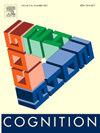可记忆性的时间和空间特性揭示了对艺术创作过程的洞察
IF 2.8
1区 心理学
Q1 PSYCHOLOGY, EXPERIMENTAL
引用次数: 0
摘要
在创作艺术时,艺术家必须不断地决定每一笔,以实现他们的作品的目标。一个共同的目标是创造一些令人难忘的东西——一件能在观察者的记忆中持续存在的作品。然而,一个悬而未决的问题是,不同的艺术决策如何影响一件作品在创作过程中的可记忆性。为了测试这个问题,我们使用了一个神经网络(ResMem)来跟踪50个数字艺术作品创作视频的可记忆性逐帧变化。我们通过人类记忆实验(N = 399)测试了该神经网络的预测,发现ResMem的预测与整个艺术创作过程中的人类记忆表现显著相关。然后,我们收集了每件作品创作过程的多种指标,包括低级视觉特征、中级视觉特征、神经网络衍生特征、艺术特征和空间属性。我们发现,细节和低层次视觉特征的变化对一件作品的记忆没有贡献;更重要的是,简单性和可变性的整体衡量标准与乐曲的可记忆性有关。此外,更大的变化(例如,遮挡,素描),特别是在图像的地平线以下,对记忆性产生最大的影响。重要的是,我们发现一件作品的可记忆性在很大程度上是从一开始就确定的,后来发生的变化对一件作品的可记忆性的影响越来越小。这些发现对艺术家和心理学家在思考图像创作过程中影响记忆的因素具有重要意义。本文章由计算机程序翻译,如有差异,请以英文原文为准。
The temporal and spatial properties of memorability reveal insights into the art creation process
When creating art, artists must make constant decisions with each pen stroke in order to achieve their goals of the piece. One common goal is to create something memorable—a piece that will persist in the memories of the observer. However, an open question is how different artistic decisions impact the memorability of a piece as it is being created. To test this question, we utilized a neural network (ResMem) to track the frame-by-frame changes in memorability for 50 videos of the creation of digital art pieces. We tested this neural network's predictions via a human memory experiment (N = 399), finding that ResMem's predictions significantly correlated with human memory performance across the art creation process. We then collected multiple measures of each piece's creation process, including low-level visual features, mid-level visual features, neural network-derived features, artistic features, and spatial properties. We find that changes in details and low-level visual features do not contribute to the memorability of a piece; rather more global measures of simplicity and variability relate to the memorability of a piece. Further, larger changes (e.g., blocking, sketching), particularly below the horizon of the image, make the biggest impacts on memorability. Importantly, we find that the memorability of a piece is largely set from the very beginning, and changes that occur later have diminishing impact on the memorability of a piece. These findings have important implications for both artists and psychologists in thinking about the factors that impact memory during the creation of an image.
求助全文
通过发布文献求助,成功后即可免费获取论文全文。
去求助
来源期刊

Cognition
PSYCHOLOGY, EXPERIMENTAL-
CiteScore
6.40
自引率
5.90%
发文量
283
期刊介绍:
Cognition is an international journal that publishes theoretical and experimental papers on the study of the mind. It covers a wide variety of subjects concerning all the different aspects of cognition, ranging from biological and experimental studies to formal analysis. Contributions from the fields of psychology, neuroscience, linguistics, computer science, mathematics, ethology and philosophy are welcome in this journal provided that they have some bearing on the functioning of the mind. In addition, the journal serves as a forum for discussion of social and political aspects of cognitive science.
 求助内容:
求助内容: 应助结果提醒方式:
应助结果提醒方式:


